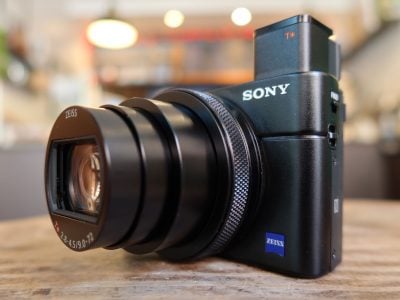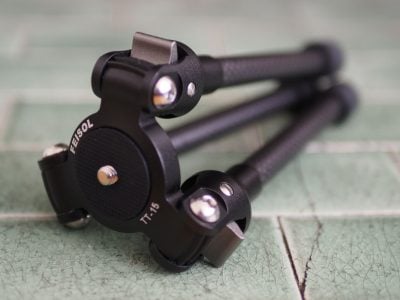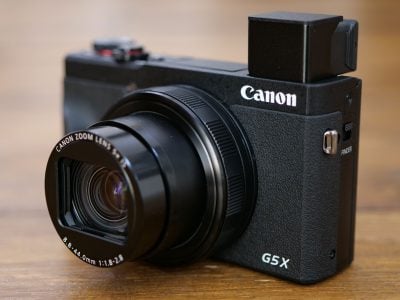Sony Cyber-shot DSC-W270 / W290
-
-
Written by Gordon Laing
Sony Cyber-shot DCS-W270 / W290 verdict
The Sony Cyber-shot DSC-W290 / W290 is a well-built compact with with a useful zoom range and a range of features that makes it suitable for point and shoot photography. It has some more advanced options, but lacks anything approaching full manual exposure controls. Auto scene detection, face recognition and smile shutter features will help novices get better pictures with less effort.
The 12.1 megapixel sensor allows you to comfortably produce prints up to A3 in size, or crop sections from the frame for smaller prints and web use. But our tests revealed the Cyber-shot’s image quality was at best average with soft detail and some evidence of smearing. At smaller sizes the W270 / W290’s images look fine, but if you’re not really making use of the camera’s full 12.1 megapixel resolution you could save money and arguably get better image quality from a camera with a smaller sensor.
As a video camera, the Cyber-shot DSC-W270 / W290 is more impressive. With a choice of VGA and two HD modes it outperforms the Canon Powershot A2100 IS and the Panasonic Lumix DMC-FS25. It is however a shame there’s no HDMI port for connecting to an HDTV and, like the Canon and Panasonic cameras, it’s also not possible to use the optical zoom during shooting.
Overall, the Sony Cybershot DCS-W270 / W290’s strength is not in still image quality or features, but ease of use. So how does it compare to its closest rivals?
Compared to Canon Powershot A2100 IS
Both the Sony Cyber-shot DSC-W270 / W290 and Canon Powershot A2100 IS are well-designed, well-built compact cameras. There’s an obvious difference in appearance however – the Sony is significantly smaller and lighter. The other thing that sets them apart is zoom range. With a 6x optical zoom the Powershot A2100 IS has a much longer reach – 216mm equivalent compared with the Cyber-shot’s 140mm. But despite it’s shorter reach at the long-end, the Cyber-shot provides a wider angle of view at the other end of the range – 28mm equivalent compared with the Canon’s 36mm. For many people this will be more useful.
For people shots, there’s little to choose between these cameras. The Canon’s face tracking is more accurate, but the Sony’s smile shutter adds an extra feature that might make make the difference if you take a lot of family photos and group shots.
Neither camera is a sparkling performer when it comes to multiple shooting. With almost a two-second lag between shots the Cyber-shot hardly qualifies it to carry the name multi-shot, but it does do better in short burst and at lower resolutions. At just over a second a shot the Powershot isn’t fast, just faster. The Cyber-shot does better with flash recycling, though, and is ready to take a second flash photo a couple of seconds after the first. The Sony also boasts HD video recording to the standard VGA of the Canon. Some may however prefer the convenience of AA battery power from the Canon.
In terms of image quality, we prefered the sharper, more detailed, less processed, look of the Powershot A2100 IS images to those of the Cyber-shot DCS-W270 / W290. See our Canon PowerShot A2100 IS review for more details.
Compared to Panasonic Lumix DMC-FS25
To look at the numbers you’d be forgiven for thinking there’s little to tell the Sony Cyber-shot DSC-W270 / W290, and the Panasonic Lumix DMC-FS25 apart, with almost identical pixel counts zoom ranges and LCD panel sizes (the Cybershot DSC-W270 is marginally smaller). The cameras are also almost identical in size with the Panasonic just under 20 grams lighter than the Sony.
So what sets them apart? Well, first of all there’s the build quality. The Sony feels more solid and the controls are better designed and easier to use. The Panasonic Lumix DMC-FS25 uses an on/off switch and another to switch between capture and playback modes. That means it can’t switch modes when you press a mode-specific control, for example pressing the shutter release to take a photo when in playback mode. And despite the Panasonic’s Quick menu button, the Cyber-shot’s menu system felt better organised and easier to use to this reviewer.
There’s not much to choose between the two cameras in terms of image quality. Using the default settings the Lumix produces more highly colour saturated photos with higher contrast and marginally better detail.
If you plan to use your compact as a backup video camera, the Cybershot provides higher resolution 720p HD video, outperforming Panasonic’s 848×480 pixel WVGA mode. Look out for our forthcoming review of the FS25…
Sony Cyber-shot DSC-W270 / W290 final verdict
Sony’s Cyber-shot DSC-W270 / W290 is a good value compact with a high resolution 12.1 Megapixel sensor, flexible 28-140mm zoom range and a wealth of features aimed at getting best result in most situations for the point and shoot photographer.
Its 5x optical zoom, rightly in our view, provides optimum wide angle coverage, sacrificing any pretensions to long telephoto capability, making it well suited for general photography. With four shooting modes plus movie and a well thought out and logicaly organised menu, it’s a joy to use.
It comes with the same caveats that apply to most Sony cameras. It accepts only Memory Stick storage, so if you have a pile of SD cards from a previous camera it makes a purchasing decision that much harder. And if you want to use the HD video mode it has to be Memory Stick PRO duo. There’s also a proprietary cable to connect the camera to your PC. This works well and is quick, but you can’t substutute a plain USB cable if you forget to take it on holiday, or something happens to it.
In image quality terms the Cybershot DSC-W270 / W290 is a little disappointing. In our quality comparison with the Canon Powershot A2100 IS and Panasonic Lumix DMC-FS25 it came a close third with lack of image detail across the frame. If you view your photos full-frame on your PC screen you probably wouldn’t notice this, but if you want to crop, or make big prints it’s going to be a factor.
If you’re looking for a well-built compact that’s uncomplicated and simple to operate though, and which also has good automatic performance, a capable general-purpose zoom, topped off with excellent quality HD video, the Cyber-shot W270 / W290 represents great value for money. These pros make up for the slightly disappointing still image quality and earn it our Recommended rating, but those who enjoy big enlargements or viewing at 100% on-screen may prefer the Canon A2100 IS.
|
Bad points | Scores (relative to 2009 compacts) |
 | ||
Build quality: Image quality: Handling: Specification: Value:
Overall: |
17 / 20 15 / 20 18 / 20 15 / 20 16 / 20
81% | |||
| ||||






